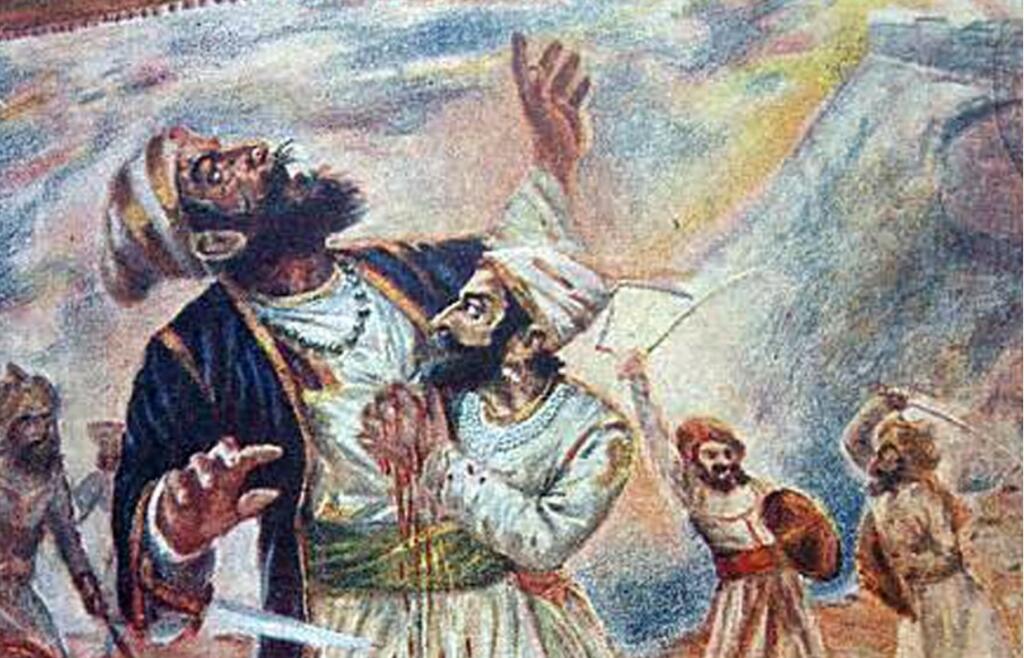India as we know it today would not have existed without this great son of the soil- Chhatrapati Shivaji. His exemplary vision and courage gave us “swarajya” from the clutches of Mughals and Turkic sultanates. Shivaji believed that Afghans, Turks, Uzbeks, Persians, Abyssinians, and other invaders had no right to rule this land, its people and decide its fortunes. There exist several incidents that are legendary and excellent examples of how Shivaji put the terrain and the meagre resources at his disposal to good use to win against far more formidable enemies. One of such major incidents is the Battle of Pratapgarh that depicts Shivaji’s courage to fight for Swarajya.
Battle of Pratapgarh:
Adilshahi regime in Bijapur, insecure of Shivaji’s growing influence in the Maval region, aimed at destroying him. Thus, the commander of the Adilshahi forces, that is, Afzal Khan, led the campaign against Shivaji to bring Shivaji out into the plains as it could have added up to his strength. In such a move, he attacked the holy town of Pandharpur and later demolished the temple of Bhavani at Tuljapur.
Battle of Pratapgarh was fought between Shivaji and General Afzal Khan from the Adilshahi dynasty on November 10, 1659, at ‘Fort of Pratapgad’ near Satara, Maharashtra. It was Maratha’s first major victory against a regional power that further led to the final establishment of the Maratha Empire.
Afzal Khan had killed Shivaji’s brother in the battle, but the latter did not want war. Thus, he had sent an emissary and the meeting was set up. Despite the pact between the two to meet unarmed, both had weapons hidden with them. While Afzal Khan carried a dagger to kill Shivaji, the latter had wagh nakh hidden in his clothes to defend himself. Shivaji was also wearing armour to protect himself as he was aware that Afzal is not trustworthy.
However, Shivaji’s idea to protect himself turned out to be fruitful as Afzal Khan, followed by his devilish intention, tried to stab Shivaji in the back while appearing to embrace him. But the vicious attempt to kill Shivaji failed as the dagger was deflected by his armour. In the aftermath, Khan was disembowelled and beheaded by one of Shivaji’s lieutenants. The severed head was presented to Shivaji’s mother, Jijabai as she wanted vengeance for the ill-treatment of Shahaji (Shivaji’s father) and the loss of her elder son, Sambhaji.
The battle turned out to be a massive defeat for the Adilshahis as the total loss of 5000 soldiers was witnessed.
The Rise of the Maratha Empire:
The Battle of Pratapgarh has great significance as it had led to one of the longest and bloodiest battles in the Deccan between Mughals and Marathas. With the exemplary winning, Maratha’s had acquired a large number of weapons and horses which greatly added to its army strength.
A few months after the battle, another battle was fought with the Adilshahi camp. Shivaji’s outnumbered army displayed great military prowess and defeated the enemy force. He also raided Mughal territory near Ahmednagar and in Junnar.
Followed by the consecutive memorable victories, the foundation for the Maratha Empires that changed the course of history in the Deccan was laid. And, it all started on November 10, 1659, with the Battle of Pratapgarh.
